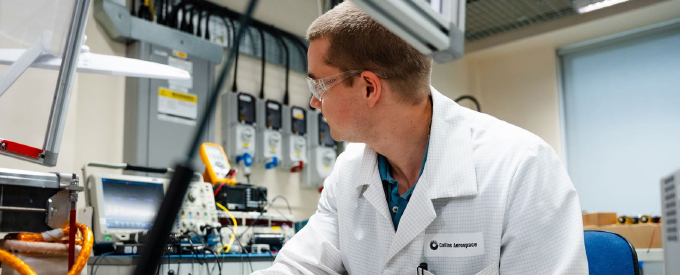2024-08-08
Collins Aerospace’s HECATE Project Passes Design Review
Collins Aerospace has announced a major achievement in the Clean Aviation HECATE project. The European Union-funded initiative is developing next-generation high-voltage distribution systems for hybrid-electric aircraft, and it’s successfully passed a critical juncture – the Preliminary Design Review (PDR).
The PDR signifies a critical milestone for the project. It demonstrates that the initial designs for the project’s core components, encompassing power conversion, secondary distribution systems, primary distribution, power management systems, and cabling, have undergone a rigorous review and received approval from a team of experts.
This completion greenlights further development and refinement of the technology.
Leading the charge on the project is Collins Aerospace’s Applied Research & Technology team and Power & Controls business. It is joined by a powerhouse consortium of European aerospace leaders like Safran (technical coordinator), Airbus Defence and Space, Leonardo, and several universities. Together, this team is pushing the boundaries of electric aviation technology.
Key HECATE Advances
HECATE, short for Hybrid-Electric Regional Aircraft Distribution Technologies, has reached key goals towards demonstrating a 500 kW hybrid-electric architecture in ground tests at Technology Readiness Level 5 (TRL5) by 2025.
In cooperation with the consortium partners, Collins has achieved PDR for the project’s power conversion and secondary distribution systems, while Safran has achieved PDR for the primary distribution, power management systems and cabling.
Airbus Defence & Space and Leonardo continue to provide the airframer perspective, supporting requirements and validation activities. All top-level project requirements, including the electrical distribution architecture, have been defined and the programme is on track to achieve TRL4 and Critical Design Review by year’s end.
Clean Aviation Partnership
“Hybrid-electric aircraft are a central pillar of the aviation industry’s drive to reduce carbon emissions, yet in order for these aircraft to fly, they will require new distribution technologies that can support significantly higher voltages,” said Mauro Atalla, senior vice president, Engineering & Technology for Collins. “Working together with our HECATE consortium partners, we’re breaking new ground in the maturation of these critical, enabling technologies and progressing on schedule. Public-private partnerships like Clean Aviation are essential to bringing new, sustainable aviation technologies to market, and we look forward to flight testing HECATE under a potential Clean Aviation Phase 2 programme.”
Costin-Ciprian Miglan, project officer for HECATE at Clean Aviation, added: “HECATE project has achieved an important milestone with the preliminary design reviews successfully passed for all primary and secondary distribution key sub-systems. This work is the result of the proactive cooperation of 37 partners across 10 European countries.”.


No Comments